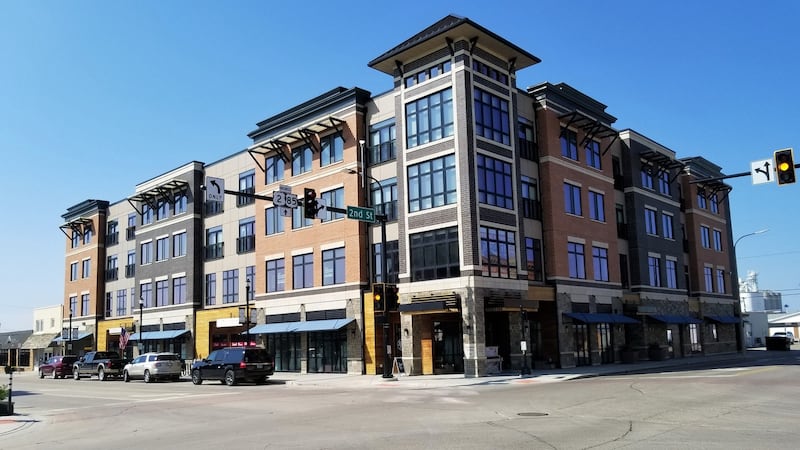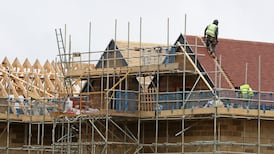Global oil prices have dropped almost 50 per cent below their 2014 high. But here in North Dakota, oil is still the only game in town.
Named after Henry Bakken, on whose land the first well was constructed in 1953, the Bakken Formation is thought to hold about 7.4 billion barrels of recoverable oil stretching across western North Dakota, Montana and north into the Canadian provinces of Alberta and Saskatchewan.
In Watford City and Williston, ground zero of the Bakken oil boom, camp sites are full and prefab houses or 'man camps' built to house oil workers litter the otherwise bucolic countryside. Pick-ups with registration plates from Florida, Oklahoma and especially Texas dominate the streets. The typical, familiar symbols of suburban American life – big box stores such as Home Depot, Bed Bath & Beyond or Target are absent in Williston. But locals find a certain comfort in the fact that in their places are names such as Halliburton and Hess.
Thanks largely to the shale revolution, the US now regularly produces more oil month-to-month than Russia or Saudi Arabia. And Texas aside, today no other US state produces more crude oil than North Dakota, a state bigger than Ireland, Scotland and Wales combined but home to just 760,000 people. Over the past decade, the Bakken has become one of the largest oil shale plays in the world, meaning that when America came close to going under in the aftermath of the Great Recession that unfolded after 2008, North Dakota, pumping 1.2 million barrels per day at its height in 2014, boasted the lowest unemployment rate in the country.

"We have all the energy we need, we have all the water [for fracking procedures] we need," says Williston mayor Howard Klug. Currently, there are 15,741 oil wells and 63 rigs exploring across North Dakota, the majority in the western areas.
The boom attracted people from all walks of life: preachers, human traffickers, documentary filmmakers, truck drivers, strippers from Las Vegas, hotel moguls, artists and others all hoping to make a buck. By February of 2014, rent per square-foot in Williston was higher than in New York City. The same year it opened a $76 million (€68 million) recreation centre complete with surfing simulator and Olympic-size swimming pool. Not bad for a town the size of Dundalk.
For a time, Williston descended into a modern-day wild west. Supermarket shelves were emptied by busloads of oil workers in minutes. At the Heartbreakers strip club in downtown, one customer shot dead another in 2013. A tornado that smashed its way through one of the once-ubiquitous man camps dotting the countryside in May 2014 only fed the sense of hedonism that flavoured those times.
And then an even greater disaster struck: Between June and December 2014 the price of crude oil fell by 44 per cent on the back of slowing economics in China, India, Brazil and Russia, and continued spiralling for a further year. The state's oil tax revenue dived nearly 70 per cent between 2015 and 2016. "We were a temporary town," Klug reflects of those days. "Workers came in for two weeks and went home for two weeks."
Front and centre
Today, oil is still front and centre in western North Dakota. Single-lane roads have been transformed into four-lane highways to accommodate the constant truck traffic, and the infamous man camps erected years ago to house the tens of thousands of workers descending on Williston and nearby Watford City, though fewer in number now, remain eyesores on an otherwise beautiful prairie landscape. In downtown Williston, artists and art boutique stores sit against the backdrop of huge grain silos perched on the edge of town. “We put a lot of money into infrastructure with the future in mind,” says Klug. “We’re looking at putting some petrochemical plants and plastics plants up here and diversifying the economy even more.”

North Dakota has 48,000kms of petroleum pipelines and Bakken oil is famed for its high-quality 'sweet' variety that contains little hydrogen sulphide. Even as the Dakota Access Pipeline came online in 2017, transferring 570,000 barrels a day, trucks are still the backbone of the industry with as many as 1,000 a day travelling the local country roads.
The black gold has revolutionised the local economy but not always in positive ways. Williston’s population has trebled in just 10 years to around 45,000 residents, placing enormous strain on the city to provide even the most basic infrastructure, and which still finds itself almost half a billion dollars in debt. Service workers for supermarkets and restaurants are almost impossible to find. Rents, by national standards, remain extremely high. State legislators continue to roll back environmental control laws governing the reporting of toxic oil and brine spills.
Like thousands of others, Melissa Krause from Milwaukee came to Williston because she saw opportunity. Arriving in 2012 on a short-term contract with Walmart, Krause later landed a job as a reporter with the Williston Herald.
“In 2012, it was insanely busy. (Working at) Walmart here, you could spend all night stocking and then one customer clears an aisle,” she says. However, after the ‘bust’ of 2014, a lot of people decided to make Williston their home. “You saw a lot of the transient workers leave and saw everyone bring their families here,” she says.
“I thought: ‘there’s going to be a lot of families, a lot of very young children who need more outlets of things to do’,” she says. “I saw an opportunity.” So, two years ago Krause opened QuickDraw Art Studio on Williston’s Main Street. She does instructive painting classes, children’s art classes and birthday parties, and potter’s wheel training. Business in just its second year, she says, is up 28 per cent. Now, Krause says she may need a larger space.
“I think there’s a huge misconception of what Williston is. People would be surprised by the amount of women and children that are here,” she adds.
Her’s is not a view shared by all. A May 2016 Reuters report described the North Dakota oil patch retreat as a “stunning reversal of fortune”, that a “quiet desperation” had set in northwestern North Dakota and that the local oil industry’s “future has evaporated”.
Those at the coalface – Krause and Klug, for example – would disagree.
![Williston mayor Howard Klug: “We have all the energy we need, we have all the water [for fracking procedures] we need.”](https://www.irishtimes.com/resizer/v2/ATH6JZ3W7MYXFBQCHH73QA6JQU.jpg?auth=3cb1398d789adc230e913a8e6e0576791c0276cc2c74970cbb825c940346a7da&width=800&height=450)
Record production
In June, the month for which the most recent figures are available, North Dakota’s oil production hit a record 1.42 million barrels a day as did its natural gas output. “Where it used to take 45-50 days to drill an oil well, now you can drill a well in maybe 10 days,” says mayor Klug. “You know the oil is down there; it’s just like money in the bank.” In 2010 North Dakota voters approved the creation of a legacy fund that would see 30 per cent of the monthly income from oil tax be deposited into a savings account. That’s now worth around $6 billion – almost $8,000 for every man, woman and child in the state – and is growing fast. The overall tax claimed by the state on oil revenue stands at 10 per cent. Half of that goes into the legacy fund. Thirty per cent of the remainder is returned to the oil-producing counties of northwestern North Dakota.
And yet the challenges of keeping up with such development are immense.
Williston raises about $5 million a year in property taxes and receives $27 million a year from the state as part of the ‘Prairie Dog bill’ negotiated with the state government in Bismarck. However, the town’s budget for 2019 is about $170 million. More than $400 million was spent in 2013-14 on relieving roads built to ease truck traffic around the worst-affected towns: Williston, Watford City and Dickinson. Debts incurred during a previous oil boom in the 1980s took 20 years to pay off – many years after the pumps fell silent following that particular bust.
Williston’s Sloulin Field Airport, built in the 1940s, has a capacity for 8,000 passengers a year though last February alone it was used by more than 6,000 people. (A new airport is under construction.) A high-tech, $70 million high school for 1,200 students that opened in 2016 is already over capacity; the shortage of school facilities is a problem Klug admits is probably the city’s biggest.
Today, with the price of a barrel of North Dakota Light Sweet sitting at about $48, it's on the wrong side of $50. That energy companies made up almost one-quarter of all bankruptcies in the US in the past year tells its own story.
Then there’s the environmental implications that few in the area seem to seriously take to task. Researchers at the University of Michigan reported in 2016 that the Bakken Formation now accounts for 2 per cent of global ethane emission – a figure way higher than either local authorities or the oil industry itself had been reporting. North Dakota is currently flaring a quarter of the gas extracted from the Bakken – 686,000 cubic feet a day – twice the state-wide limit. Lightning strikes on brine water disposal tanks that create huge fires have become worryingly common.
But in the halls of power and in cafes across Williston, the talk is of money and oil – how much can be pumped, stored and moved, and how quickly. Rightly or not, North Dakota is staking its future firmly on the huge pot of black gold that lies underfoot.










